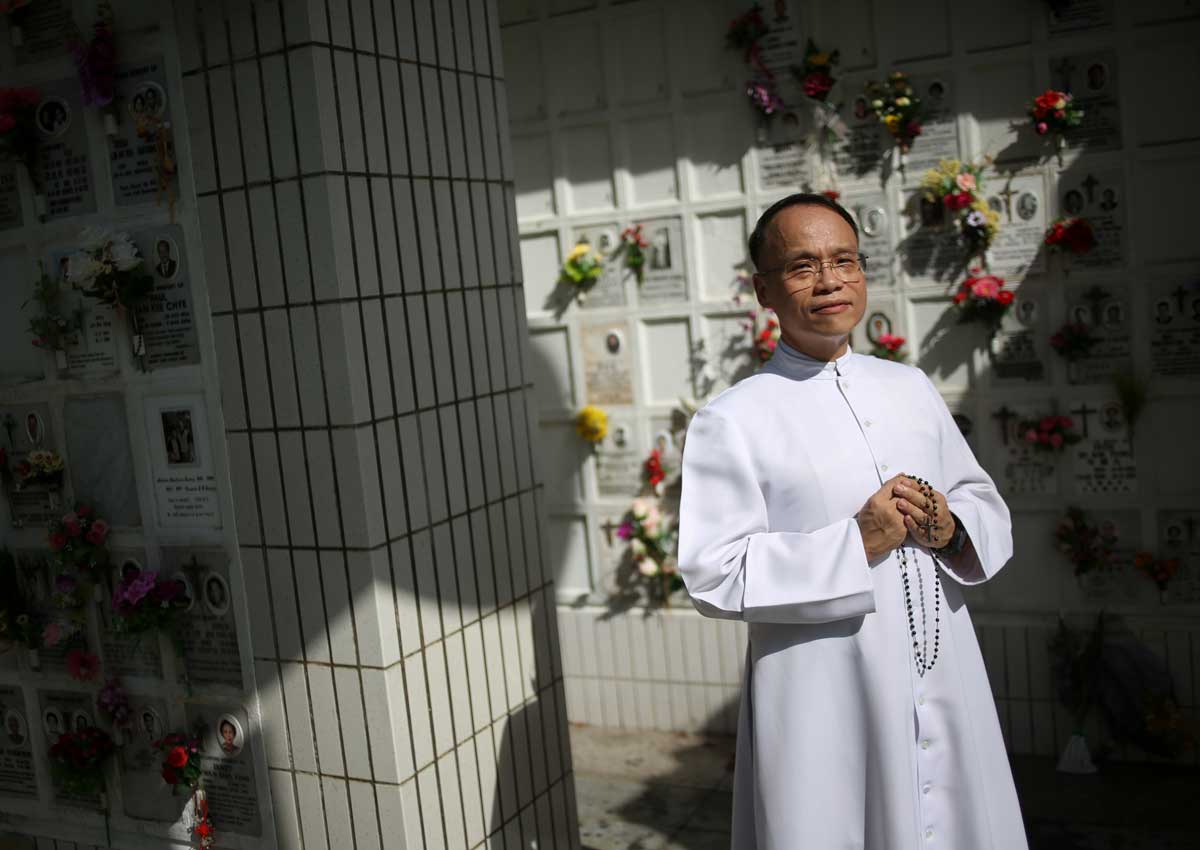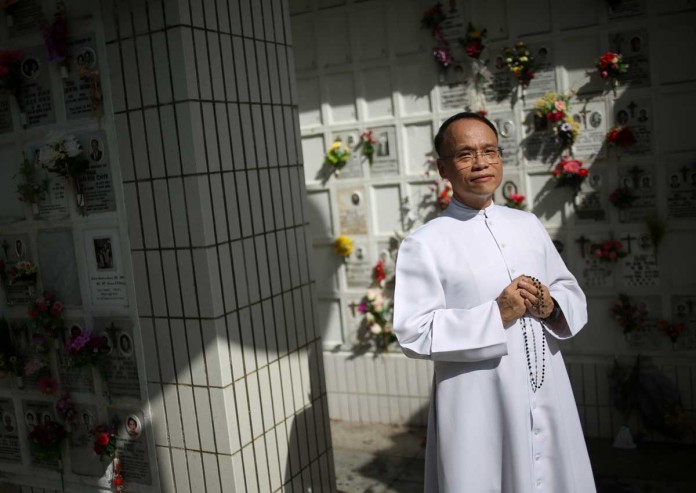The contemporary practice of turning the ashes of loved ones into diamonds to be worn as jewellery has been forbidden by the Catholic Church in Rome.
The injunction, for believers, was reiterated by Singapore’s archdiocese in late October, in guidelines on the handling of burials and the conservation of ashes.
Catholics should not scatter ashes in the air, at sea, in forests or parks, divide them across households, or use them as mementos, as they believe in the resurrection of the body, Father Ignatius Yeo, a professor of sacred liturgy at the Catholic seminary, told The Straits Times.
Father Yeo said it is recommended ashes be interred in a columbarium, so that the dead can be remembered and prayed for by the community of which he or she had been a part.
In the case of sea burials, ashes should be stored in a vessel that is “heavy enough” to sink and lay in its final resting place, said Father Yeo, who is also the Archbishop’s master of ceremonies.
The Catholic Church permitted cremation in 1963 due to the emerging needs of its followers.
While the church maintains that burial is the best way for someone to honour their faith in death, cremation is the most popular option chosen by Catholics in land-scarce Singapore.
About 15,000 cremations were conducted in Singapore last year while about 3,700 people were buried at Choa Chu Kang Cemetery, said a spokesman for the National Environment Agency (NEA).
In response to queries from The Straits Times, the National Council of Churches of Singapore said Protestants generally “do not have serious objections” to the scattering of ashes or keeping of urns at home “as long as this is done solemnly and respectfully”.
The council, which represents about 260 churches of diverse Christian traditions and denominations, including the Orthodox, said its beliefs are similar to those of the Catholic Church.
For instance, the council noted, Protestants would regard turning the remains of the dead into wearable jewellery or any kind of commemorative object as an unacceptable practice.
In a similar vein, Protestants would also regard distributing the remains to family members as disrespectful.
Father Yeo and other religious leaders said most Singaporeans continue to uphold and value traditional after-death rites.
For instance, most Hindus, Buddhists and Taoists continue to practise cremation and choose to inter the remains in a columbarium or scatter them at sea.
Hindus believe all bodies of water join with the nine sacred rivers in India, such as the Ganges, so ashes are scattered at sea in the belief that the soul can be reborn in any part of the world, according to the Hindu Endowments Board.
The scattering of small amounts of ash can be done at a designated site located about 2.8km south of Pulau Semakau, the landfill island south of mainland Singapore.
Read also: Woman dies… giving her hubby her kidney
As for Muslims, it is compulsory that the dead be buried, as far as possible on the same day or the next day that death occurs, said the Islamic Religious Council of Singapore.
The Straits Times understands that the Taoist Federation has yet to advise devotees on how to deal with modern practices.
Master Wei Yi, 32, said Taoists, for the most part, opt for cremation.
He added: “Most priests would advise against turning ashes into jewellery although, ultimately, we leave the final decision to the family.
“Personally, I believe the dead should be laid to rest in a proper resting place, so the soul won’t be disturbed.”
However, the Singapore Buddhist Federation said there are no restrictions as to how devotees commemorate the dead.
Its president, Venerable Seck Kwang Phing, said: “We’re flexible as long as it is done in reverence.
There are no restrictions if Buddhists want to turn ashes into jewellery as consciousness has already left the body.”

This article was first published on December 05, 2016.
Get a copy of The Straits Times or go to straitstimes.com for more stories.







